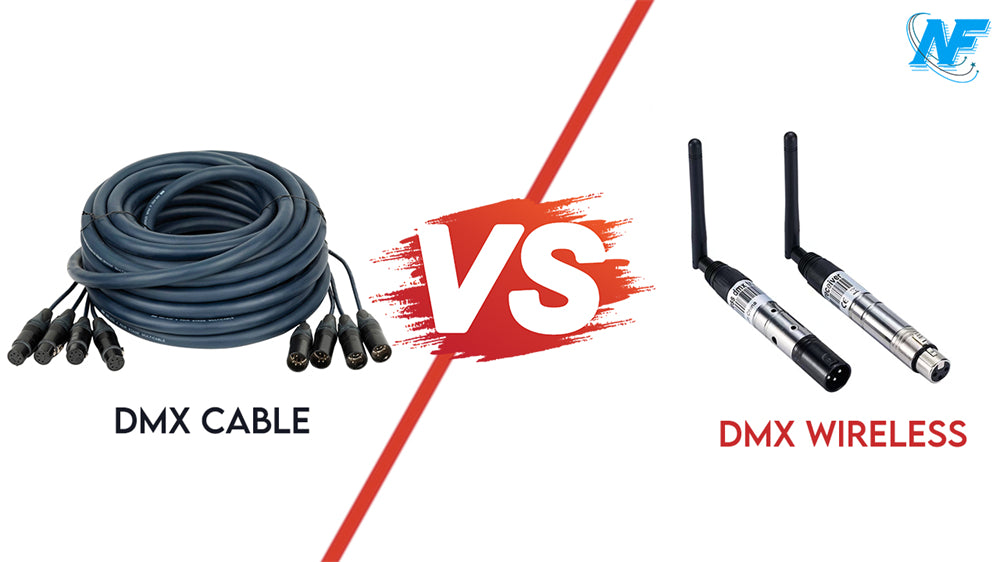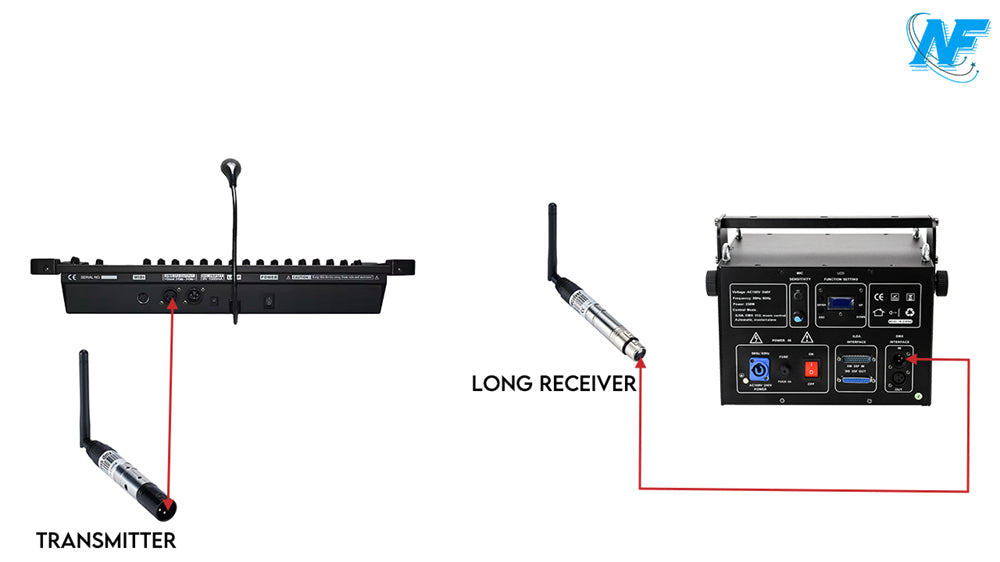DMX Wireless vs. Cable - What's Best for Your Event
by Newfeel Ho on May 05, 2024
Choosing between wireless and cabled DMX systems is a crucial decision in event planning, impacting everything from setup time to performance reliability. Here’s a deeper look into the advantages, challenges, and practical considerations of each option to help you decide what suits your event best.
Advantages of Wireless DMX
Wireless DMX controller systems offer significant advantages in terms of setup efficiency and safety. Eliminating the need for cables, these systems reduce setup time, minimize transportation logistics, and lower the risk of accidents such as tripping—common in fast-paced event environments. Additionally, the absence of physical cables can prevent common losses or theft that occur at venues.

Challenges of Wireless DMX
However, wireless systems come with their own set of challenges. The primary concerns include potential disruptions and failures due to interference, which can compromise the stability of your lighting setup. Wireless DMX controller systems are prone to latency issues, where there is a delay between the command being issued and the action being executed. This can disrupt the synchronization of lights and sounds, critical for performances.
Practical Considerations for Wireless DMX
1. Preparation and Backup Plans
It's vital to prepare for potential interruptions in DMX connectivity. For instance, intelligent moving heads can be pre-programmed to continue operating smoothly if a signal is lost. Setting lights to backup modes or activating sound-to-light settings can provide continuity during disruptions.

2. Transmission Range and Interference
While some basic wireless systems may offer up to 20 meters of reliable transmission, professional-grade options can extend several hundred meters. However, relying solely on the specified range isn't advisable due to the possible interferences in a typical event setting. Strategic placement of transmitters and understanding the venue’s environment are crucial to minimize these issues.
3. Latency Management
Addressing latency is critical in maintaining the quality of your show. Ensuring that your wireless DMX system is capable of quick and reliable transmission will help maintain the sync between audio and visual elements.
4. Cost and Equipment Requirements
The initial setup for a wireless DMX system includes at least one transmitter and receiver, though devices that combine both functions, known as transceivers, are also available. Costs can start at around $100 and vary based on the complexity and range needed. Features like frequency shifting and automatic frequency selection help enhance signal reliability and reduce interference.
5. System Flexibility and Redundancy
While wireless DMX offers greater flexibility and creativity in lighting design, integrating a hybrid system where critical fixtures remain wired can safeguard against total system failures. For extensive coverage, especially indoors, additional accessories like repeaters or splitter boosters might be necessary to reach all areas effectively.
Conclusion
Both wireless and wired DMX systems have their merits, depending on the specific requirements and scale of your event. While wireless systems offer convenience and reduce physical clutter, they require careful planning to handle potential issues like interference and latency. Ultimately, the choice between wireless and cable DMX should be guided by the event’s technical demands, budget constraints, and the desired level of reliability.





